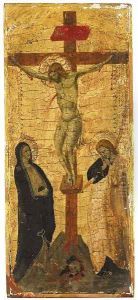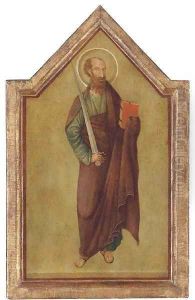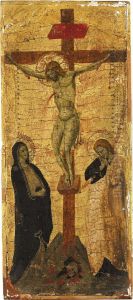Lippo Di Benivieni Paintings
Lippo Di Benivieni was an Italian painter who was active during the late 13th and early 14th centuries, a period that marks the transition from medieval art to the early Renaissance in Italy. Very little is known about his life, and the documentation of his work is scarce. The dates of his birth and death are not precisely recorded, but he is known to have been active from around 1296. He likely passed away around 1326, given that there are no records of his activity beyond that year.
Lippo Di Benivieni's work is characteristic of the Florentine school, showing an adherence to the Byzantine style that dominated European painting before the Renaissance, while also incorporating the emerging interest in naturalism that was beginning to take hold in Italy. This combination of styles is typical of the era's art, reflecting a period of transition and experimentation. The stiff, hieratic figures and use of gold in backgrounds were typical of Byzantine-influenced art, whereas the attempts at creating depth and volume in figures, as well as a softer approach to drapery, heralded the coming changes that would define the Renaissance.
Di Benivieni's most notable work is the 'Madonna and Child enthroned', which also includes two angels. This piece is indicative of his style, which, while still medieval in many respects, hints at the early Renaissance preoccupation with three-dimensionality and the human form. Unfortunately, due to the lack of extensive surviving works and historical records, Lippo Di Benivieni's contributions are not as well known or studied as those of his more famous contemporaries, such as Giotto, who is often credited with pioneering the Renaissance style in Italian painting. Nonetheless, Di Benivieni's work is valuable for understanding the progression of Western art and the context within which the Renaissance emerged.


